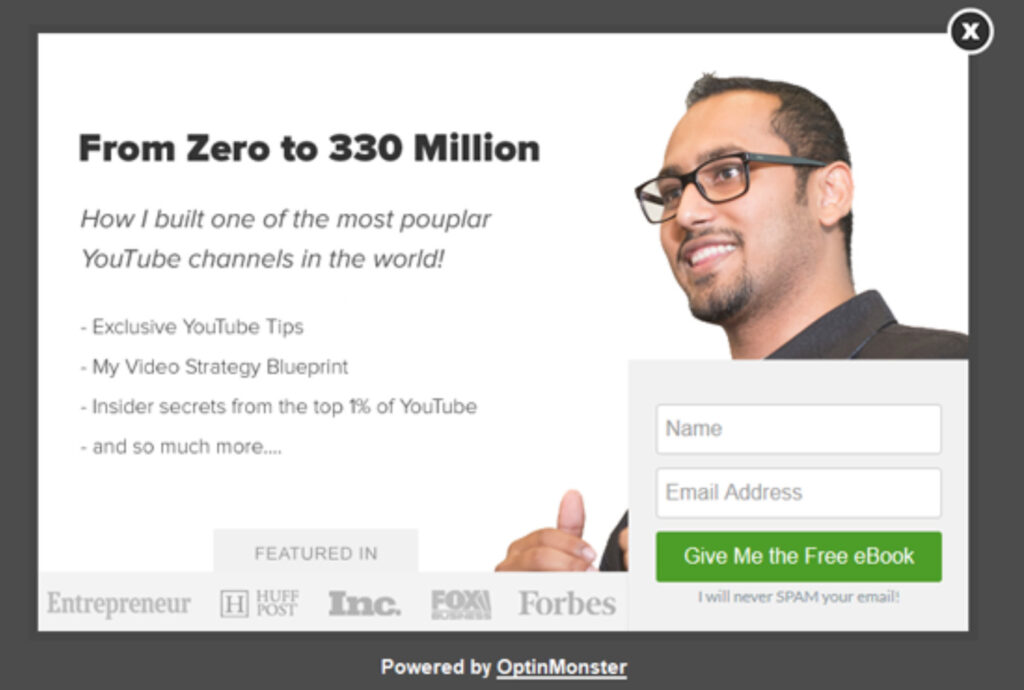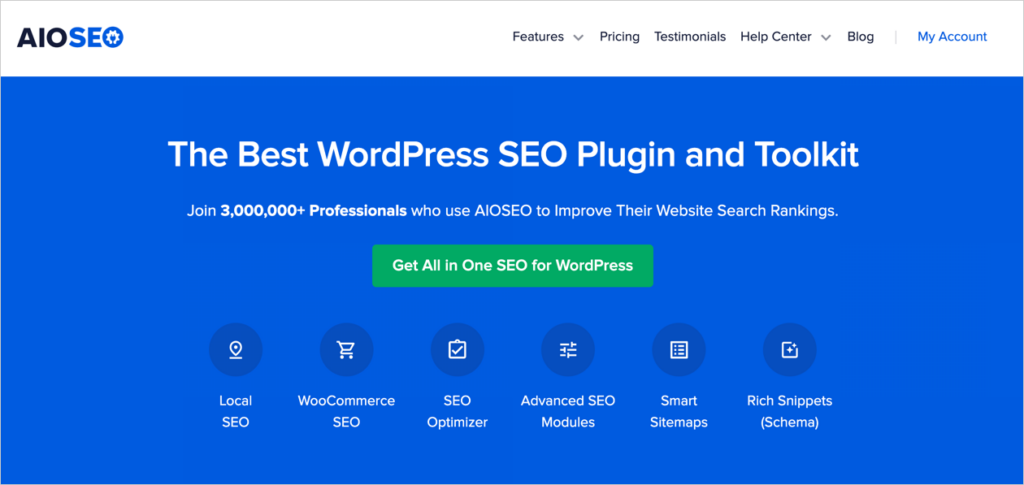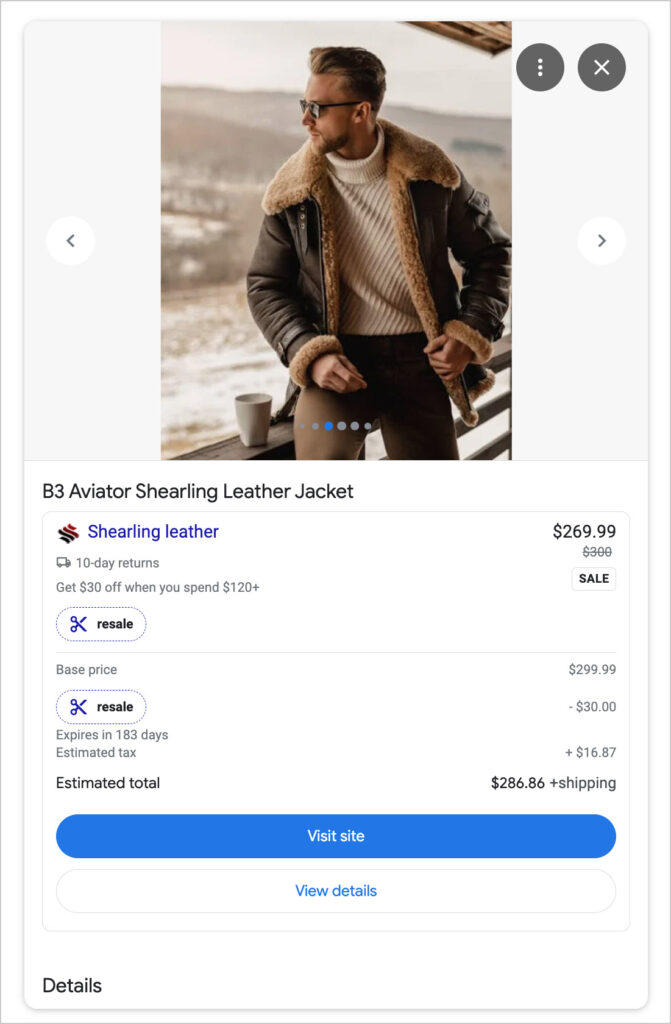Curious about buyer types and how they can help you increase conversions?
Buyer types can help you identify information gaps on your site. These gaps may prevent people from buying.
In this article, you’ll learn the 4 buyer types and how to adjust your content to meet their needs.
The 4 Buyer Types
Created by marketer Bryan Eisenberg, the 4 buyer types are shortcuts to understanding buying behavior.
They represent 4 ways individuals collect information online and make buying decisions.
As Eisenberg puts it,
At the most fundamental level, all people are motivated by a single, critical question: What’s in it for me (WIIFM)? Their dominant personality type strongly influences how they ask that question, perceive value, and consciously – or more typically, subconsciously – approach a decision-making task.
Web visitors look for cues that match their buying type. The presence of cues will attract them; the absence of cues will drive them away.
You can quickly identify and fix gaps in your content marketing using this information.
Eisenberg calls this: “seeding your website with elements that match their motivation.”
The 4 types are Competitive, Methodical, Humanistic, and Spontaneous.
How to Use the 4 Buyer Types to Create Content that Converts
Let’s look at each type in detail. We’ve added some recommendations based on our experience using the buyer types.
Competitive: Solution-Focused Achievers
Information gathering: Fast
Thinking style: Logical
Competitives excel at achieving. Many are successful entrepreneurs and will likely know more than your salespeople, executives, and marketers combined.
Understandably, Eisenberg believes this buyer type is the most difficult to sell to.
Fast decision-makers, Competitives have a gift for identifying the best solutions. But, in their haste, they may overlook superior products whose features aren’t communicated clearly.
Competitives focus on “What needs to be done next?” and “What’s the best solution?“
When they visit your site, they’ll be thinking:
- Why is your solution the best?
- What’s your impact? Prove it to me.
- What results have your customers gotten?
- Can you help me gain competitive advantage?
- What’s unique about your solution?
Eisenberg’s usability tests found that Competitives will scan a web page quickly, rarely scroll, and leave if they don’t immediately find what they’re looking for.
While this scanning behavior is typical to all web users, it’s heightened with time-strapped Competitives.
Once they land on your homepage, you’ll have a few seconds, at most, to get their attention.
How to Action This:
Provide a straight line from your homepage to the information Competitives want.
- Highlight why your solution is the best. (Be succinct.)
- Add a prominent link in the upper-left of the homepage for impact or results.
- Make sure the linked page is concise with key numbers at the top.
- Provide a competitor comparison chart but limit it to critical features.
- Create an exit-intent pop-up highlighting results to capture their contact info.

Methodical: Detail-Oriented Analysts
Information gathering: Slow
Thinking style: Logical
Methodicals devour information in a deliberate manner. No detail escapes their attention as they seek to understand everything about your product or service while making notes on their unanswered questions.
Detail-oriented, the methodical brain functions like a supercomputer, scanning everything it comes across.
These brilliant people will spontaneously label and categorize information, mentally placing it in a larger context.
When they visit your site, they’ll be thinking:
- How does your solution work?
- What research is available?
- How is your process or product superior?
- What’s the larger context that your solution inhabits?
- What’s the caliber of the people involved?
How to Action This:
- Prepare detailed documentation for methodicals and easy access to it.
- Provide all available research on your product.
- Use meaningful charts, diagrams, or interactive data visualizations where helpful.
- Apply high content standards to prevent typos, low-resolution images, or other misses that will distract the Methodical.
- Make sure the content provided for them is logically structured and thorough.
- Using FAQs, links, or tool tips, provide granular details on shipping, pricing, billing, guarantees, and refund policies.
While many Methodicals are intellectuals, they appreciate clear writing in plain language. Refrain from dressing up your communications for them.
But if you have staff with advanced degrees, do highlight their contributions in your documentation.
Humanistic: Creative Socializers
Information gathering: Slow
Thinking style: Emotional
Humanistic browsers hone in on “who.” They want to get a feel for the people behind your brand and the customers using your products.
Until they get this, they won’t buy.
They’re attracted to images of people, communities of users, testimonials, and authentic brand stories.
Here’s what they’ll be thinking when they visit your site.
- Who’s on staff? What makes them interesting?
- What’s the real story behind your brand?
- What’s unusual or surprising about your story?
- Is there an active community of users? Where or how can I connect with them?
- What are people saying about you?
How to Action This:
- Share stories about people overcoming problems.
- Explain how users feel when they use your product.
- Include appealing images of staff, users, and community.
- Highlight testimonials, reviews, and average star ratings.
- Include customer photos with testimonials.
Spontaneous: Life of the Party
Information gathering: Fast
Thinking style: Emotional
Spontaneous types are adventure-seeking socializers who make fast decisions.
Sometimes considered impulse buyers, spontaneous people say, “I know what I like. That’s why I make fast decisions.”
They’re extroverts willing to take risks, try things out, and are attracted to challenges and excitement.
Like the humanistic browser, spontaneous visitors will be drawn to images of people, particularly if they’re having fun or doing daring things.
They value new experiences and enjoy prestige.
When they visit your site, they’ll be thinking:
- What is there to do here (with other people)?
- How can this take me to a new level?
- Does this challenge me to achieve much more?
- How does this make my life more enjoyable?
- How can you help me stand out from the crowd?
Spontaneous users respond well to urgency-based messages and free trials because they’re willing to take risks and make quick decisions.
How to Action This:
- Highlight what’s surprising or unusual about your product, service, or events.
- Create messaging that mixes a challenge with the opportunity to stand out.
- Publish appealing photos or videos of staff or users having fun.
- Deploy exit-intent pop-ups offering discounts for completing a checkout in progress.
- Highlight time-saving benefits and user-friendliness.
Now that we’ve looked at the 4 buyer types, do you recognize some of these? What would you add to the descriptions?
Using these 4 buyer types can help you connect more effectively with site visitors while growing conversions.
But how do you get people to your site to begin with? That’s where digital marketing comes in.
SEO is a powerful and cost-effective way to attract your target audience at any consideration stage.
If you’re serious about gaining mindshare and market share you’ll want to invest in SEO.
The good news is SEO doesn’t need to be costly. There are low-cost software tools that simplify the process, empowering consumers with no experience to optimize their sites and compete with the big guys.
Next, social media, with its emphasis on images, video, and community, can be an effective way to connect with Humanistic and Spontaneous types.
Realize though that newsfeed-based social platforms, like Facebook, are effective for boosting brand awareness but have a very limited organic reach. You’ll need to pay to reach your audience. The exception is YouTube, which is a subscriber model.
Learn more about the differences between SEO and social media, so you can allocate resources wisely.
Now, how do you get started with SEO?
Get Started with SEO
We recommend that WordPress site owners use the All in One SEO (AIOSEO) plugin.
All in One SEO simplifies SEO by showing you actions to take to rank higher in search engine results.
If you can click buttons and fill out form fields, you can use All in One SEO (AIOSEO).
No coding or technical knowledge is needed.

Step 1 is to download and install the plugin.
Then, AIOSEO will analyze your web pages for SEO and readability.
Navigate to a specific page to see an SEO score and a checklist of action items.

Then click on an item to see how to improve your SEO.

One of the most popular features of All in One SEO is the schema generator. This tool generates code that turns your pages into rich snippets like the one below.

Rich snippets attract more click-throughs from search engine results pages. And they can help a page rank for additional keywords.
All in One SEO (AIOSEO) is an established plugin with thousands of 5-star reviews on WordPress.org. More than 3 million people are using it.
This plugin can help you develop a consistent SEO discipline. And that makes all the difference when it comes to higher rankings.
Additional Uses of the Buyer Types
Eisenberg’s 4 buyer types can be applied to a variety of communications, including the following.
- Social media messaging
- Sales training
- In-person sales
- Follow-up messaging
For millennia, people have created shortcuts for understanding personality differences. For instance, ancient Greece gave us the concept of the 4 humors, which sought to explain temperaments by the balance of bodily fluids.
Q&A on the 4 Buyer Types
Are there only 4 buyer types?
Some frameworks for understanding buyer types include more than the 4 types in Bryan Eisenberg’s model.
By reducing the potential number of types, and focusing on common patterns in information gathering and decision-making, Eisenberg made the buyer types tool easy to use.
Are the 4 buyer types personas?
No, Bryan Eisenberg’s 4 buyer types are not buyer personas. However, the types can inform the creation of personas.
What about criticism of buyer modalities?
Buyer modalities, or buyer types, are sometimes criticized due to their resemblence to well-known personality tests like the Myers-Briggs test.
This test is used by companies to match employees to work best suited to them and to foster improved communication.
Over the past decade a flurry of articles were published claiming the Myers-Briggs test was “totally meaningless” or a “bad tool.”
In 2019, Suresh Balasubramanian, then-senior VP for Myers-Briggs, told USA Today “the research discrediting the MBTI is outdated, but the statistics have been so often repeated by subsequent articles and studies that it created a sort of ‘Internet myth.’”
Regardless of what one thinks of Myers-Briggs, it continues to be widely by companies, along with other tests like the Enneagram, the CliftonStrengths Assessment, and DISC.
So clearly, many individuals find these tests useful.
The other criticism of buyer modalities is over their use in marketing. Is it a useful tool in marketing? You’ll need to decide for yourself.
Ultimately, adopting a mindset to craft hypotheses and experiment is key to winning in digital. And that necessitates trying new things and questioning the orthodoxy.
For many experts saying “X doesn’t work,” there’s a savvy entrepreneur doing “X” and taking the results to the bank.
Resources on SEO Content
What’s Next?
The 4 buyer types can help you recognize communication patterns and plug information gaps in your content and messaging.
Now that you’ve learned how information needs can influence buying, what’s next?
Explore how to use Google Merchant Center to drive sales and how to manage Google Reviews for improved SEO.
To advance in SEO, subscribe to our YouTube Channel. You’ll find plenty of search engine optimization tutorials there. And why not join us on X (Twitter), LinkedIn, or Facebook to stay in the loop.


